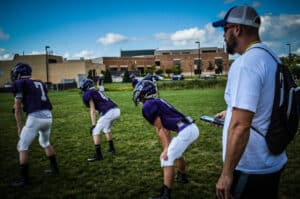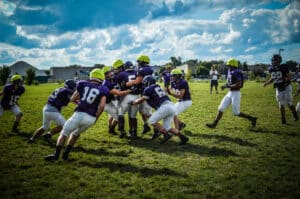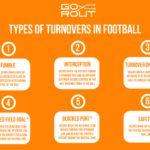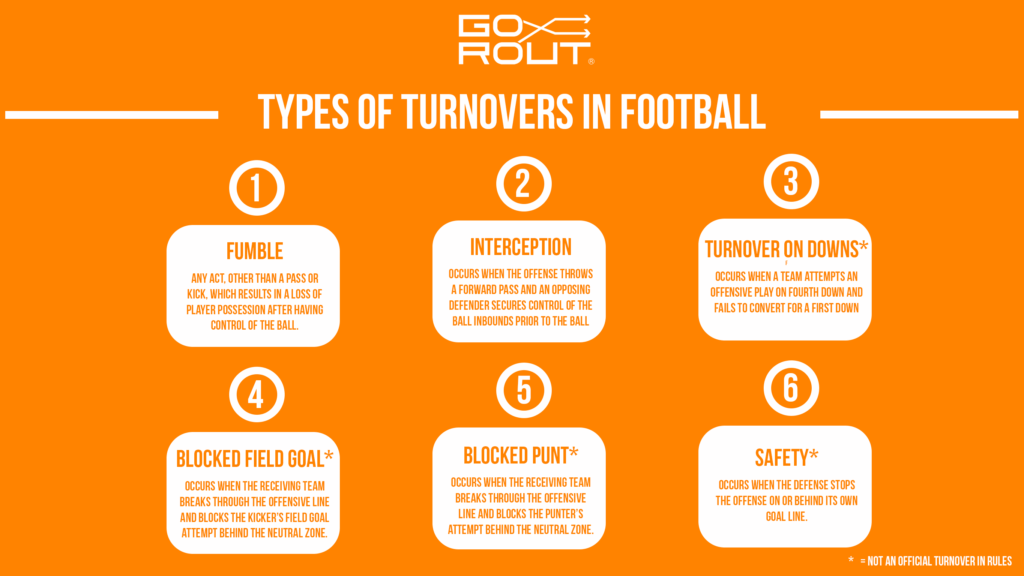10 Football Agility Drills to Enhance Players’ Speed and Reflexes
Reading Time: 8 minutes
Reading Time: 8 minutes
Agility is a critical skill that can make the difference between a good player and a great one. Football agility drills improve players’ speed, reflexes, and overall performance on the field, helping maintain balance, coordination, and control under pressure.
These football drills can range from sprinting and lateral shuffles to more complex footwork patterns.
Whether you’re a coach looking to give your team an edge or a player aiming to improve your skills, incorporating agility drills into your training regimen is essential.
In this blog post, we will explore ten football agility drills suitable for all skill levels you can easily integrate into your routine.
The Importance of Football Agility Drills

Football agility drills improve overall speed, quick reactions, coordination and balance. Targeted football drills such as agility ladder exercises, plyometric movements and sprints help players change direction quickly, react to opponents and maintain balance under pressure.
Key Components of Football Agility Drills
Football conditioning prepares players to perform at their peak during games. Agility drills develop well-rounded athletes who change direction rapidly, react quickly and play football in top condition.
Here are the key components of football agility drills:
- Speed: Moving quickly across the field at sprint speed allows players to outrun opponents and make fast plays.
- Balance: Football players must maintain stability to quickly change direction and find their body’s center while staying on their feet through contact.
- Coordination: Developing precise footwork and control over body movements makes smoother transitions during a football game.
- Reaction time: When football players can respond quickly to their opponent’s movements, they are able to make quicker decisions and more effective maneuvers.
- Strength: Muscular strength contributes to explosive movements, stability and endurance during high-intensity game situations.
Football agility drills influence a player’s speed, coordination, and quick decision-making on the field.
Warm-Up Exercises
A football practice plan must include dynamic warm-up exercises to prepare players physically and mentally for the training ahead. These exercises increase blood flow, improve flexibility and reduce the risk of injuries.
A warm-up routine sets the tone for productive football practice and strengthens a player’s body and ability to perform at their best.
Examples of warm-up exercises
- Dynamic stretches
- Bounding
- Arm circles
- Plyometrics
- High knees
Warm-up exercises prepare athletes physically and mentally to perform optimally during practice and games.
Top-10 Football Agility Drills for Players
Football agility drills improve speed and explosiveness across all positions. The team’s success heavily depends on the defense’s capability to limit receivers and minimize yards after the catch.
Incorporate these ten drills into your practices along with the right football coaching gear for better player development and more wins this season.
Drill 1: Ladder Drills
Ladder drills are an easy way to improve footwork, coordination and agility. Use a speed ladder for stepping patterns – one foot in each rung, two feet in each rung or a lateral shuffle. This practices quick directional changes and rapid movements.
Types of ladder drills
- Ickey shuffle
- In-out
- Hopscotch
Drill 2: Cone Drills
Cone drills boost speed, heighten agility and teach athletes to change direction quickly. Cones work all leg and core muscles to build leg strength and explosive power. Adding these drills into a workout requires only cones and comfortable training footwear. These drills simulate game intensity and practice foot placement for all positions.
Types of cone drill
- X-drill
- L-drill
- Sprint shuffle
Drill 3: Shuttle Runs

Shuttle runs are versatile and intense drills designed for cardiovascular fitness. This exercise involves running back and forth between two markers while focusing on rapid acceleration and deceleration. Basic shuttle runs and advanced variations improve an athlete’s ability to change direction quickly and efficiently.
Types of shuttle runs
- 5-10-5 Pro agility shuttle
- 300-yard shuttle
- PACER test
Drill 4: T-Drill
The T-Drill is a classic agility drill for lateral quickness and change-of-direction skills. It involves sprinting forward, shuffling laterally and backpedaling to form a “T” shape. Players start at the first cone of the T, sprint to the top and final cone, shuffle sideways to each end of the T – the third cone and fourth cone – and backpedal to the first cone.
Types of t-drills
- Standard T
- Reverse T
- Diagonal T
Drill 5: Box Drills

Box drills in American football involve setting up a square or rectangular area on the field using four cones for various agility exercises. Emphasize staying low to the ground, quick footwork and explosive movements to improve maneuvers on the field with balance and control. They are particularly beneficial for skill players and defensive backs.
Types of box drills
- Forward facing
- Spin
- Figure 8
Drill 6: 5-10-5 Drill
This football agility drill is also known as the “short shuttle” or “pro agility shuttle.” It is a cone setup in which players start in a three-point stance at the middle cone. They sprint five yards to one side, touch the line with their hand, then sprint forward 10 yards in the opposite direction, touch that line and sprint back through the middle cone to finish. It works on technique, quick feet and maintaining balance quickly.
Types of 5-10-5 drills
- Standard 5-10-5
- Reaction 5-10-5
- Weighted 5-10-5
Drill 7: Mirror Drill

The mirror drill hones a player’s ability to react swiftly and maintain tight coverage against opponents. Players pair up and face off against a designated ball carrier while focusing on mirroring their movements within a defined area. Focus on quick footwork, balance and spatial awareness and stay close to the offensive player while anticipating and countering cuts and changes of direction.
Types of mirror drills
- Progressive distance
- Reactive
- Obstacle
Drill 8: Reaction Ball Drills
Reaction ball drills strengthen reflexes, hand-eye coordination and reaction times in athletes. They use a small, irregularly shaped ball that bounces unpredictably upon hitting a surface. Predicting these reactions replicates unpredictable game situations.
Types of reaction ball drills
- Wall rebound drill
- Partner reaction drill
- Multi-surface bounce
Drill 9: Circle Drills
The circle football agility drill helps players with their technique, agility, and tackling skills. Players form a circle around a coach or designated ball carrier, who moves unpredictably within the circle.
Defenders must react quickly with proper tackling form as the ball carrier changes direction or makes cuts. This drill helps defenders practice tackling in open-field situations. It creates game-like scenarios where defenders must read and react to the movements of offensive players.
Types of circle drills
- Full circle
- Half circle
- Blocking circle
Drill 10: Partner Chase Drills

Partner chase drills in football improve speed, agility and competitive spirit between teammates. They are conducted in pairs. The chaser attempts to catch or tag their partner, who tries to evade capture within a designated area. Partner chase drills foster competitiveness and teamwork among players.
Types of partner chase drills
- Straight-line chase
- Obstacle chase
- Lateral chase
How to Use GoRout to Execute a Practice Plan

Web scripting app
The football practice script just got a significant upgrade. It now has a digital command center for developing efficient practice sessions. Our web app replaces hand-drawn football coaches’ play cards and messy spreadsheets.
It offers seamless integration with your existing card drawing software and the ability to import any image file or PDF document without switching apps. Organize, edit and copy scripts with ease.
Accessible from any device through Google Chrome compatibility, GoRout lets you work from anywhere. It means more time for coaching and less time spent on practice planning.
On-field practice app
The GoRout on-field practice app revolutionizes how coaches run practices and communicate with players. Our coach-to-player communication system allows instant formation transitions on iPhone, iPad, and Android devices.
Coaches eliminate time-consuming changes with a single tap, keeping players focused and maintaining practice momentum. Seamless play review enables coaches to flag plays for immediate review with just a screen touch to quickly identify areas for improvement and adapt drills on the fly.
Live card editing lets coaches draw directly on the screen for real-time adjustments. Coaches start, end and structure practices while sending plays directly to players’ football wristbands.
GoRout is more than just an app. It’s a coaching partner that streamlines practice logistics so coaches can spend more time coaching and less time planning.
Wearable player devices
The GoRout football practice device is plug-and-play simple and requires no setup. Select your practice group, and players are instantly ready to receive football screen plays.
This wearable technology in sports has a discreet vibration that alerts players to new instructions so everyone stays on the same page without disrupting the flow.
Each device comes with a 100% warranty against breakage, providing robust protection for players and equipment.
Get a quote, strengthen communication and build a successful football team this season.
Benefits of GoRout on-field communication system

Here’s what makes GoRout an excellent choice for your football team:
- Insider’s understanding: Developed by coaches with firsthand experience in coaching environments so the system meets the needs of football coaches and players.
- Instant setup, no Wi-Fi dependency: Hassle-free setup process that doesn’t require technical knowledge or synchronization of devices for immediate usability.
- GoRout Air™ technology: Uses radio airways-based networking independent of Wi-Fi, leveraging US national infrastructure for secure and reliable communication.
- All-weather versatility: Devices operate reliably in all weather conditions with high-visibility screens and customizable settings for optimal visibility.
- Cutting-edge security: Secure communication with a 4-way privacy screen and market-leading encryption for all calls to safeguard team communications.
- 100% replacement warranty: Offers a guarantee against device breakage or failure to demonstrate durability and reliability under intense conditions.
GoRout testimonials show how hundreds of coaches like you have improved their practices, increased their reps and had game-winning seasons with the help of GoRout equipment.
Common Mistakes to Avoid with Football Agility Drills
One common mistake coaches make when planning football agility drills is neglecting to customize drills to the specific needs of each athlete.
Overemphasizing speed without adequate focus on technique can lead to poor form and increased injury risk.
Insufficient warm-up routines and a lack of progressive overload in training can also hinder performance.
A football practice script needs well-rounded agility drills that push athletes to their limits while prioritizing their long-term development and safety.
Measuring Improvement in Agility
Measuring improvement in agility tracks progress and performance on the field. Here are some methods:
- Timed drills: Use standardized agility drills, such as the T-drill, 5-10-5 shuttle and ladder drills, to time players and measure speed and improvements over time.
- Functional Movement Screen (FMS): Assessing movement patterns can identify imbalances or weaknesses. Improving these scores betters agility and performance on the field.
- Video analysis: Recording and analyzing drills identifies areas for improved technique and efficiency. Compare videos over time to show progress and highlight improvements.
- Wearable technology: Accelerometers and GPS trackers provide detailed data on speed, distance and movement patterns during football agility drills.
- Football wristbands: These devices, which have embedded sensors, track player movements and provide real-time data and instant feedback on agility metrics.
Ultimately, these tools and techniques ensure that agility training is targeted and efficient, leading to superior performance on the field.
Conclusion
Football agility drills boost players’ speed, reflexes and overall performance.
GoRout’s sports coaching technology modernizes practice sessions to help teams execute each agility drill efficiently and effectively.
Sports coaching technology provides valuable real-time data and feedback for precise measurement and monitoring of players’ progress.
The combination of targeted agility drills and our cutting-edge technology gives teams the tools to excel on the field.
FAQs about Football Agility Drills
How do you train agility for football?
Use football agility drills to practice balance, leg strength and quick direction changes. You can learn to keep your legs and knees bent, your body forward, and your center of gravity low to run sharply with different speeds and directions.
What is the best exercise to improve agility?
The most effective agility exercises include agility ladder drills, plyometric exercises, sprinting and jumping calisthenics and running drills.
How to build speed and agility?
Football agility drills and exercises enhance speed, quickness, coordination and balance. Use plyometric exercises like box jumps for explosive power and agility ladder drills for footwork and coordination. Short and long sprints, jump rope drills, lateral movements, and bodyweight exercises like squats and burpees also help improve speed and agility.
How do you increase quickness in football?
To increase quickness in football, improve stride rate and length by cycling your arms and legs faster and covering more ground with each foot in each stride. Simple agility drills boost performance and speed on the field.







